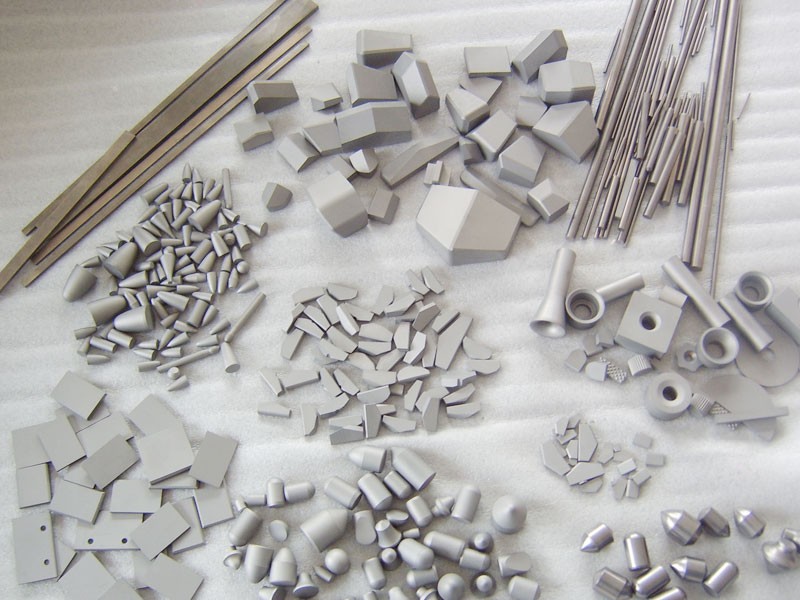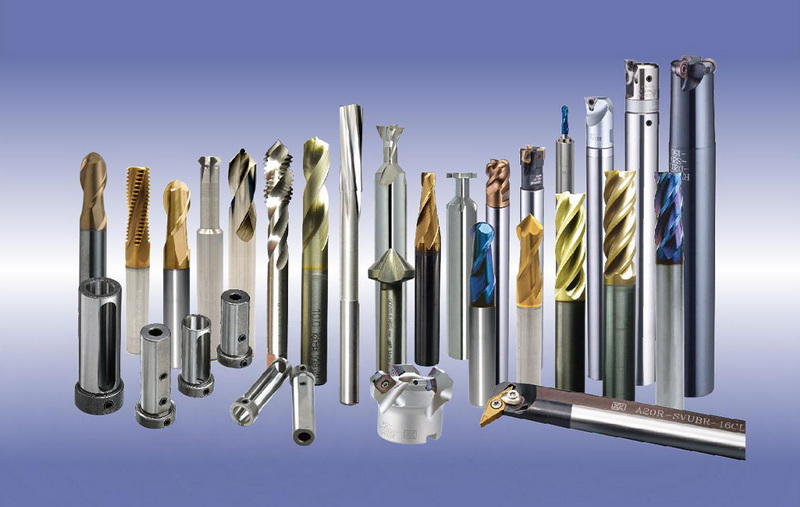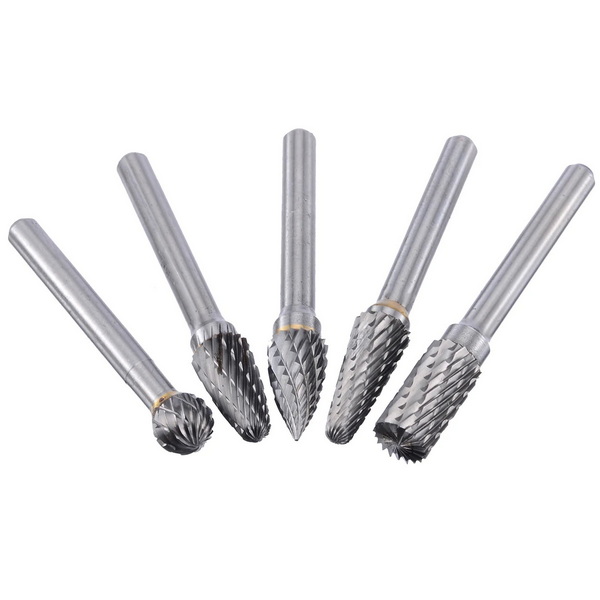Content Menu
● Introduction to Tungsten Carbide
● Understanding Density: The Basics
>> Why Density Matters
● Density of Tungsten Carbide: Key Figures
>> Pure Tungsten Carbide (WC)
>>> Table: Density of Tungsten Carbide and Related Materials
>> Cemented Carbide Grades
● Factors Influencing the Density of Tungsten Carbide
>> Manufacturing Process and Its Impact
● Methods for Measuring Density
>> Archimedes' Principle
>> Helium Pycnometry
>> X-ray Computed Tomography
● Comparison: Tungsten Carbide vs. Other Materials
● Applications Where Density Matters
>> Cutting Tools
>> Mining and Drilling
>> Aerospace and Defense
>> Wear Parts
>> Jewelry and Luxury Goods
● Microstructure and Crystal Structure
>> Atomic Structure
● Environmental and Economic Considerations
>> Resource Availability
>> Recycling and Sustainability
>> Cost Implications
● Challenges in Working with Tungsten Carbide
>> Machining and Shaping
>> Joining and Assembly
>> Brittleness
● Conclusion
● FAQ: Frequently Asked Questions About Tungsten Carbide Density
>> 1. What is the exact density of pure tungsten carbide?
>> 2. How does the density of tungsten carbide compare to pure tungsten?
>> 3. Why does the density of cemented carbide vary?
>> 4. Does high density make tungsten carbide better for industrial tools?
>> 5. How is the density of tungsten carbide measured in industry?
● Citations:
Tungsten carbide stands as one of the most remarkable materials in modern engineering, prized for its exceptional hardness, wear resistance, and impressive density. But what exactly is the density of tungsten carbide, and why does it matter so much in industrial and scientific applications? This comprehensive article delves into the density of tungsten carbide, exploring its physical properties, how it compares to other materials, and its significance in various industries. Along the way, we'll illustrate key concepts with diagrams and images to enhance understanding.

Introduction to Tungsten Carbide
Tungsten carbide (WC) is a chemical compound composed of equal parts tungsten and carbon atoms. It is renowned for its extreme hardness, high melting point, and remarkable resistance to wear and corrosion. These attributes make it indispensable in industries ranging from metalworking and mining to aerospace and defense.
Tungsten carbide is not a metal, but a ceramic-like compound that is often combined with metallic binders to form cemented carbides. Its unique combination of properties arises from the strong covalent bonds between tungsten and carbon atoms, as well as the dense packing of atoms in its crystal lattice.
Understanding Density: The Basics
Density is a fundamental physical property defined as mass per unit volume, typically expressed in grams per cubic centimeter (g/cm³) or kilograms per cubic meter (kg/m³). For solids like tungsten carbide, density is a direct indicator of how tightly atoms are packed within the material's structure.
Formula:
Density=Mass/Volume
A higher density means more mass is packed into a given volume, which often translates to greater strength and stability in engineering applications.
Why Density Matters
- Performance: High-density materials usually offer greater inertia, stability, and resistance to deformation.
- Durability: Denser materials are less likely to be penetrated or worn away, making them ideal for cutting, drilling, and wear-resistant applications.
- Design Considerations: Density affects the weight of components, which is crucial in industries like aerospace and automotive engineering.
Density of Tungsten Carbide: Key Figures
Pure Tungsten Carbide (WC)
- Density: The most widely cited value for pure tungsten carbide is 15.6 g/cm³.
- Range: Depending on the manufacturing process and the presence of binders or additives, the density can range from 13.4 to 15.7 g/cm³.
Table: Density of Tungsten Carbide and Related Materials
| Material | Density (g/cm³) |
| Tungsten | 19.3 |
| Tungsten Carbide (WC) | 15.6 |
| Steel | 7.8 |
| Titanium | 4.5 |
| Gold | 19.3 |
| Lead | 11.4 |
As shown, tungsten carbide is significantly denser than steel or titanium, but less dense than pure tungsten or gold.
Cemented Carbide Grades
Tungsten carbide is often used as a composite material, where WC grains are cemented together with a binder metal (commonly cobalt or nickel):
- Tungsten-cobalt (YG) grades: Density decreases as cobalt content increases. For example:
- YG6: 14.5–14.9 g/cm³
- YG15: 13.9–14.2 g/cm³
- YG20: 13.4–13.7 g/cm³
- Tungsten-titanium-cobalt (YT) grades: Density decreases with more titanium carbide.
- YT5: 12.5–13.2 g/cm³
- YT14: 11.2–12.0 g/cm³
- YT15: 11.0–11.7 g/cm³
- Tungsten-titanium-tantalum/niobium (YW) grades:
- YW1: 12.6–13.5 g/cm³
- YW2: 12.4–13.5 g/cm³
- YW3: 12.4–13.3 g/cm³
The presence of binders and other carbides reduces the overall density compared to pure WC.
Factors Influencing the Density of Tungsten Carbide
Several factors affect the final density of tungsten carbide products:
- Binder Content: Higher cobalt or nickel content lowers the overall density, as these metals are lighter than WC.
- Additive Carbides: Incorporation of titanium, tantalum, or niobium carbides further reduces density.
- Porosity: Manufacturing methods that introduce more pores will decrease the density.
- Grain Size and Sintering: Finer grains and optimal sintering can help achieve higher densities by reducing voids.
Manufacturing Process and Its Impact
Tungsten carbide products are typically made by powder metallurgy. The process involves mixing fine WC powder with a binder, pressing the mixture into shape, and then sintering it at high temperatures. The degree of densification during sintering directly affects the final density.
- Hot Isostatic Pressing (HIP): This technique can further increase density by applying pressure during sintering, closing residual pores and achieving near-theoretical density.
Methods for Measuring Density
Archimedes' Principle
The most common method for measuring the density of tungsten carbide is the Archimedes' principle. The sample is weighed in air and then in a liquid (usually water), and the difference in weight is used to calculate the volume displaced, and thus the density.
Steps:
1. Weigh the dry sample in air.
2. Submerge the sample in water and weigh again.
3. Calculate the volume of water displaced (equal to the volume of the sample).
4. Use the formula:
Density=Mass in air/Volume displaced
Helium Pycnometry
For highly precise measurements, especially for powders or porous samples, helium pycnometry is used. Helium gas penetrates even the smallest pores, providing an accurate measurement of the true volume.
X-ray Computed Tomography
Advanced imaging techniques like X-ray computed tomography (CT) can visualize internal porosity and structure, aiding in density calculations and quality control.
Comparison: Tungsten Carbide vs. Other Materials
| Property | Tungsten Carbide | Tungsten | Steel | Titanium |
| Density (g/cm³) | 15.6 | 19.3 | 7.8 | 4.5 |
| Hardness (Mohs) | 9–9.5 | 7.5 | 4–4.5 | 4 |
| Melting Point (°C) | 2,870 | 3,422 | 1,370 | 1,668 |
As the table shows, tungsten carbide is much denser and harder than steel or titanium, but less dense than pure tungsten.
Applications Where Density Matters
The high density of tungsten carbide is critical in applications where mass and stability are essential:
Cutting Tools
High density ensures stability and vibration resistance in high-speed machining. Tungsten carbide cutting tools maintain their shape and sharpness even under extreme forces.
Mining and Drilling
Dense, hard bits can penetrate rock and withstand abrasion. Tungsten carbide is the material of choice for drill bits, mining tools, and wear-resistant components.
Aerospace and Defense
Used for counterweights, projectiles, and armor-piercing ammunition. The combination of density and hardness allows for compact, heavy-duty parts that can withstand extreme conditions.
Wear Parts
Bearings, nozzles, and valves benefit from long life due to density-driven wear resistance. Tungsten carbide's high density makes it ideal for components that must resist erosion, abrasion, and impact.
Jewelry and Luxury Goods
The heft and durability of tungsten carbide have made it popular in jewelry, especially rings and watch cases. Its density gives it a substantial feel and resistance to scratching.

Microstructure and Crystal Structure
Tungsten carbide crystallizes in a hexagonal structure, with each tungsten atom surrounded by six carbon atoms. This tight atomic packing is a key reason for its high density and hardness.
Atomic Structure
- WC Structure: Each tungsten atom is bonded to six carbon atoms in a trigonal prismatic arrangement.
- Bonding: The strong covalent bonds between tungsten and carbon atoms contribute to the material's remarkable properties.
Environmental and Economic Considerations
Resource Availability
Tungsten is a relatively rare element, and its extraction is energy-intensive. Major producers include China, Russia, and Canada. The scarcity and geopolitical concentration of tungsten resources can affect the supply and price of tungsten carbide products.
Recycling and Sustainability
Due to its high value, tungsten carbide is widely recycled. Scrap carbide is collected, processed, and re-sintered into new products, reducing the demand for virgin tungsten and minimizing environmental impact.
Cost Implications
The high density and performance of tungsten carbide come at a price. It is significantly more expensive than steel or titanium, but its longevity and durability often justify the investment in demanding applications.
Challenges in Working with Tungsten Carbide
Machining and Shaping
Tungsten carbide's hardness and density make it difficult to machine using conventional methods. Specialized diamond or cubic boron nitride (CBN) tools are required for shaping and finishing.
Joining and Assembly
Welding tungsten carbide is challenging due to its high melting point and brittleness. Brazing and mechanical fastening are more commonly used for assembling carbide components.
Brittleness
Despite its density and hardness, tungsten carbide is relatively brittle compared to metals like steel. This limits its use in applications where impact resistance is critical.
Conclusion
Tungsten carbide's density—typically around 15.6 g/cm³—sets it apart as a heavyweight champion among engineering materials. This high density, combined with exceptional hardness and wear resistance, underpins its widespread use in demanding industrial applications. Whether as a pure compound or in cemented composites with binders, tungsten carbide's density is a key property that engineers and manufacturers rely on for performance, durability, and precision.
From cutting tools and mining bits to aerospace components and jewelry, the density of tungsten carbide is central to its value and versatility. Understanding how density is measured, what factors influence it, and how it compares to other materials helps engineers, designers, and consumers make informed decisions about this remarkable material.

FAQ: Frequently Asked Questions About Tungsten Carbide Density
1. What is the exact density of pure tungsten carbide?
The density of pure tungsten carbide (WC) is approximately 15.6 g/cm³. This value can vary slightly depending on crystal structure and manufacturing conditions, but it is widely accepted as the standard figure.
2. How does the density of tungsten carbide compare to pure tungsten?
Pure tungsten is denser, with a density of 19.3 g/cm³, compared to tungsten carbide's 15.6 g/cm³. The addition of carbon to form WC reduces the overall density, but tungsten carbide remains much denser than most engineering metals.
3. Why does the density of cemented carbide vary?
Cemented carbides are composites made by combining tungsten carbide powder with binders like cobalt or nickel. The density decreases as the proportion of lighter binder increases or when other carbides (like titanium carbide) are added. Thus, cemented carbide densities can range from about 11.0 to 15.0 g/cm³ depending on composition.
4. Does high density make tungsten carbide better for industrial tools?
Yes. High density provides greater stability, vibration resistance, and wear life in cutting, drilling, and wear-resistant components. It also allows for more compact, heavy-duty parts in aerospace and defense applications.
5. How is the density of tungsten carbide measured in industry?
Density is typically measured using the Archimedes principle, where the mass of a sample is divided by the volume it displaces in a liquid. This method accounts for any porosity and provides an accurate density for quality control in manufacturing.
Citations:
[1] https://en.wikipedia.org/wiki/Tungsten_carbide
[2] https://www.allied-material.co.jp/en/techinfo/tungsten_carbide/features.html
[3] https://www.mdpi.com/1996-1944/15/7/2340
[4] http://www.tungsten-carbide.com.cn/tungsten-carbide-properties.html
[5] https://www.mdpi.com/2075-4701/11/12/2035
[6] https://en.wikipedia.org/wiki/File:-Alpha_tungsten_carbide_crystal_structure.jpg
[7] http://www.tungsten-carbide.com.cn
[8] https://www.tungco.com/insights/blog/frequently-asked-questions-used-tungsten-carbide-inserts/
[9] https://www.thermalspray.com/questions-tungsten-carbide/
[10] https://www.refractorymetal.org/tungsten-carbide-uses-properties.html
[11] https://www.zzbetter.com/new/Density-of-Tungsten-Carbide.html
[12] https://www.linde-amt.com/resource-library/articles/tungsten-carbide
[13] https://commons.wikimedia.org/wiki/File:-Alpha_tungsten_carbide_crystal_structure.jpg
[14] https://www.retopz.com/57-frequently-asked-questions-faqs-about-tungsten-carbide/
[15] https://www.wolframcarbide.com/tungsten-carbide-density-and-uses-of-different-cemented-carbide-grade-yg6a/
[16] https://cowseal.com/tungsten-vs-tungsten-carbide/
[17] http://www.jnm.co.jp/en/data/carbide_character_table.html
[18] https://www.dekmake.com/density-of-tungsten/
[19] https://kdmfab.com/density-of-tungsten/
[20] https://www.matweb.com/search/DataSheet.aspx?MatGUID=e68b647b86104478a32012cbbd5ad3ea
[21] https://www.imetra.com/tungsten-carbide-material-properties/
[22] https://www.fishersci.fi/shop/products/tungsten-carbide-99-5-metals-basis-thermo-scientific-1/11388808?tab=document
[23] https://stock.adobe.com/search?k=tungsten+carbide
[24] https://cowseal.com/tungsten-vs-tungsten-carbide/
[25] https://carbideprocessors.com/pages/carbide-parts/tungsten-carbide-properties.html
[26] https://www.sciencedirect.com/science/article/abs/pii/S1359645424003562
[27] https://periodictable.com/Elements/074/pictures.html
[28] https://wolframslides.com/about_tungsten_carbide.php
[29] https://www.azom.com/properties.aspx?ArticleID=1203
[30] https://www.fishersci.at/shop/products/tungsten-carbide-99-metals-basis-thermo-scientific/p-4782215
[31] https://www.bangerter.com/en/tungsten-carbide
[32] https://www.linde-amt.com/resource-library/articles/tungsten-carbide
[33] https://www.aemmetal.com/news/tungsten-vs-tungsten-carbide-guide.html
[34] https://www.diva-portal.org/smash/get/diva2:1641929/FULLTEXT01.pdf
[35] https://next-gen.materialsproject.org/materials/mp-1894
[36] http://www.nicrotec.com/welding-consumables/tungsten-carbide-alloys-nicrotec/products.html?c=1&g=13
[37] https://www.reddit.com/r/pics/comments/1aoqq0/a_perfectly_polished_tungsten_carbide_cube/
[38] https://www.sciencedirect.com/science/article/pii/S0263436823002019
[39] https://www.atomic-scale-physics.de/lattice/struk/bh.html
[40] http://www.tungsten-carbide.com.cn/tungsten-carbide-hardness-conversion-table.html
[41] https://www.zzbetter.com/new/The-Density-of-Tungsten-Carbide.html
[42] https://tuncomfg.com/about/faq/
[43] http://www.carbidetechnologies.com/faqs/
[44] https://www.memsnet.org/material/tungstencarbidewcbulk/
[45] https://www.tungstenringsco.com/faq
[46] https://www.durit.com/fileadmin/user_upload/durit/service/downloads/DURIT_Hartmetall_en_facts.pdf
[47] https://shop.machinemfg.com/the-pros-and-cons-of-tungsten-carbide-a-comprehensive-guide/
[48] https://www.hdtools.com.tw/faq.htm
[49] https://www.sciencedirect.com/topics/earth-and-planetary-sciences/tungsten-carbide
[50] http://hardmetal-engineering.blogspot.com/2011/
[51] https://www.diva-portal.org/smash/get/diva2:1237216/FULLTEXT01.pdf
















